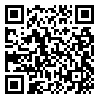Volume 8, Issue 1 (1-2021)
jbrms 2021, 8(1): 49-57 |
Back to browse issues page
Download citation:
BibTeX | RIS | EndNote | Medlars | ProCite | Reference Manager | RefWorks
Send citation to:



BibTeX | RIS | EndNote | Medlars | ProCite | Reference Manager | RefWorks
Send citation to:
Shohani F, Mihandoust Z, Mami S. The effect of assertiveness and stress management training on reducing high-risk behaviors in adolescent girls. jbrms 2021; 8 (1) :49-57
URL: http://jbrms.medilam.ac.ir/article-1-562-en.html
URL: http://jbrms.medilam.ac.ir/article-1-562-en.html
Department of Psychology, Ilam Branch, Islamic Azad University of Ilam, Ilam, Iran , xozns2006@yahoo.com
Abstract: (2298 Views)
Introduction: The present study was conducted to evaluate the effect of assertiveness and stress management skills training on the reduction of high-risk behaviors in adolescent girls.
Materials and Methods: One hundred two female students from the high schools of Ilam participated in this quasi-experimental study in the year 2020. Samples were selected by cluster sampling and were randomly assigned to two intervention groups and one control group. The samples were trained with assertiveness and stress management skills. Data were collected using a standard High Risk Behavior Questionnaire at two stages of pre-test and post-test and were analyzed using SPSS V. 22 and the statistical tests, Kruskal-Wallis and U-Mann-Whitney. A P value <0.05 was considered significant.
Results: High-risk behaviors in the assertiveness group were less than the control group (P = 0.03), but substance use in the assertiveness group was higher than the control group (P = 0.001), and the results of the intervention did not have the necessary consistency. Training intervention in the stress management group showed that high-risk behaviors in this group did not change after training (P = 0.7), but substance use in the stress management group was lower than the control group (P = 0.001). High-risk behaviors in the stress management and assertiveness groups showed a significant difference compared to the control group (P = 0.03) and the results of the training intervention in terms of assertiveness showed consistency, but in the stress management group, the results showed lack of consistency and significance. In addition, substance use in the stress management and assertiveness groups was less than the control group, which was statistically significant (P = 0.001).
Conclusion: Simultaneous implementation of assertiveness and stress management skills training with emphasis on substance use and high-risk behaviors in female students can have satisfactory effects.
Materials and Methods: One hundred two female students from the high schools of Ilam participated in this quasi-experimental study in the year 2020. Samples were selected by cluster sampling and were randomly assigned to two intervention groups and one control group. The samples were trained with assertiveness and stress management skills. Data were collected using a standard High Risk Behavior Questionnaire at two stages of pre-test and post-test and were analyzed using SPSS V. 22 and the statistical tests, Kruskal-Wallis and U-Mann-Whitney. A P value <0.05 was considered significant.
Results: High-risk behaviors in the assertiveness group were less than the control group (P = 0.03), but substance use in the assertiveness group was higher than the control group (P = 0.001), and the results of the intervention did not have the necessary consistency. Training intervention in the stress management group showed that high-risk behaviors in this group did not change after training (P = 0.7), but substance use in the stress management group was lower than the control group (P = 0.001). High-risk behaviors in the stress management and assertiveness groups showed a significant difference compared to the control group (P = 0.03) and the results of the training intervention in terms of assertiveness showed consistency, but in the stress management group, the results showed lack of consistency and significance. In addition, substance use in the stress management and assertiveness groups was less than the control group, which was statistically significant (P = 0.001).
Conclusion: Simultaneous implementation of assertiveness and stress management skills training with emphasis on substance use and high-risk behaviors in female students can have satisfactory effects.
Type of Study: Research |
Subject:
Psychology
Received: 2020/05/16 | Accepted: 2020/10/25 | Published: 2021/02/18
Received: 2020/05/16 | Accepted: 2020/10/25 | Published: 2021/02/18
Send email to the article author
| Rights and permissions | |
 |
This work is licensed under a Creative Commons Attribution-NonCommercial 4.0 International License. |





